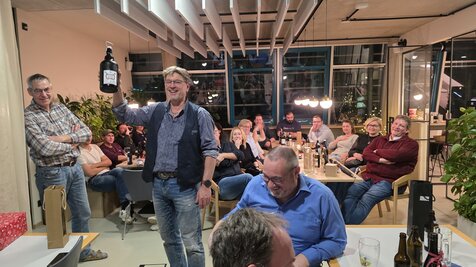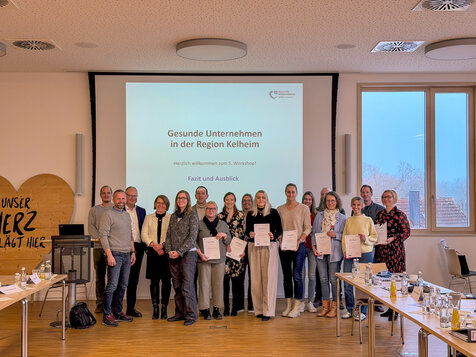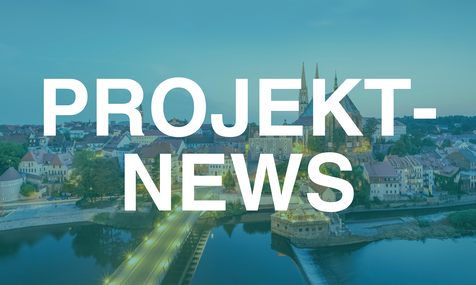
Every year again - our internal Christmas party
Once again this year, we had a wonderful internal Christmas party together. A big thank you goes to our entertainment manager Sonja Eichstätter for organizing the evening.
GZET: In your opinion, how far have we come with combined heat and power generation?
Prof. Brautsch: Technically, we are at a very good stage. We no longer just supply electricity and heat up to 90 degrees Celsius with CHP, but also produce steam or freezing cold in addition to electricity and heat. Our Institute for Energy Technology is currently receiving the award for the CHP unit of the year 2017, with which we are opening up a whole new segment of CHP, namely customized energy supply for industry.
(Note: Gammel Engineering was awarded "CHP Plant of the Year 2016" by the German CHP Association with the combined heat, power and cooling system at Osram in Eichstätt)
GZET: Do you have an example of this current development?
Prof. Brautsch: We are much further ahead technologically than people think, both in terms of the range of applications and efficiency: 45 percent electricity is no problem. And technically, we are also at an outstandingly good level. For example, the spark plug signals itself when it needs servicing. This reduces maintenance costs.
GZET: But has this also reached the minds of the business community?
Prof. Brautsch: It is in the minds of the business community. But it doesn't have a stable political framework. Just think of the EEG levy on own electricity consumption. For two to three years, it only had to be paid on 40 percent of own electricity, that was in people's heads, which is why CHP was in demand. But then the whole thing was reversed two weeks before Christmas (Gammel Energiegedanken reported). This uncertainty is the problem. We can always become cheaper and smarter. But if the boundary conditions are lacking, the best technology will not be used.
GZET: How does the uncertainty affect the work at your institute?
Prof. Brautsch: Certainly not directly. But the economic efficiency has deteriorated considerably as a result of this political decision. This is disadvantageous at the interface between the laboratory and application, i.e. for industry-related CHP research.
GZET: I don't quite understand that now. What does that mean exactly?
Prof. Brautsch: Our fundamental problem is that we are no longer in demand if the boundary conditions change overnight. We want to research and develop things that are to be used. This requires lead time. But with the volatile requirements, for example the overturning of the 40 percent CHP rule at the turn of the year, this time is being taken away.
GZET: At the same time, however, you are receiving subsidies from Bavaria's Ministry of Economic Affairs...
Prof. Brautsch: Yes, we are driving forward the digitalization of the energy industry as a whole. In November, we completed Bavaria's first digital energy utilization plan for the district of Berchtesgadener Land. Our research project for sector-coupled energy technologies, which we call "SEG-e", builds on this.
GZET: Is there even a need for this digital and cross-sectoral energy planning?
Prof. Brautsch: In fact, there is much more demand than we can handle. For example, from the districts of Kulmbach and Bamberg, from the Hersbruck municipal utilities, from the towns of Roth, Wolnzach and Vohburg. That is the future.
GZET: Sounds like an ambivalent feeling for a researcher. Thank you, Professor Brautsch, for the interview.
---
More about Prof. Brautsch and the Institute of Energy Technology at the East Bavarian Technical University of Applied Sciences Amberg-Weiden: www.oth-aw.de/brautsch/an-institut/
(Author: Zukunftsenergie-Team Gammel)

Once again this year, we had a wonderful internal Christmas party together. A big thank you goes to our entertainment manager Sonja Eichstätter for organizing the evening.

Healthy and motivated employees are the foundation of a successful company - especially in economically challenging times. The "Healthy companies in the district of Kelheim" network, in which nine regional companies have joined forces to establish occupational health management (OHM) not as a short-term measure, but as a sustainable and systematic process, follows precisely this claim.

What great news! We are incredibly proud and delighted that, together with our partner IWR GmbH, we have been awarded the planning contract for a 12 MW seawater heat pump including seawater extraction and a biomass heating plant as part of the cross-border UNITED HEAT project.